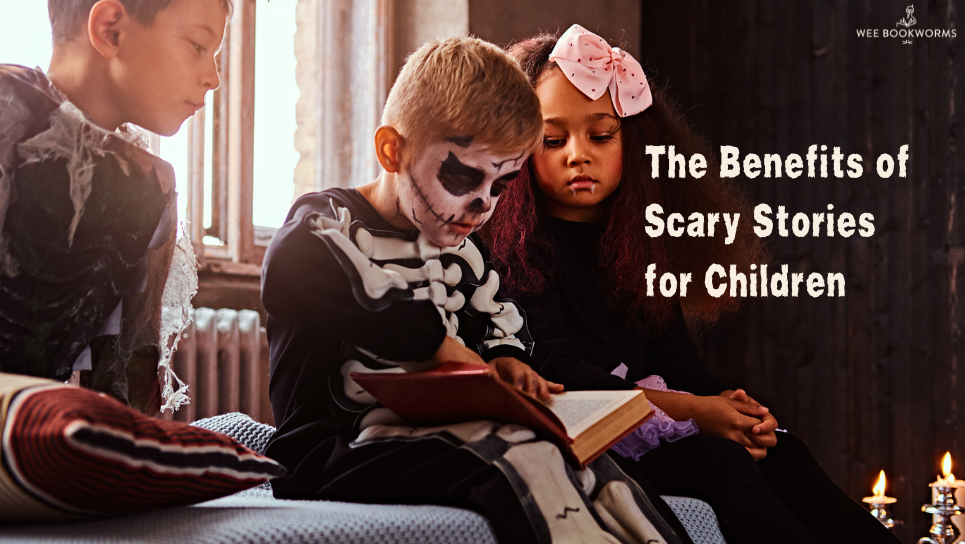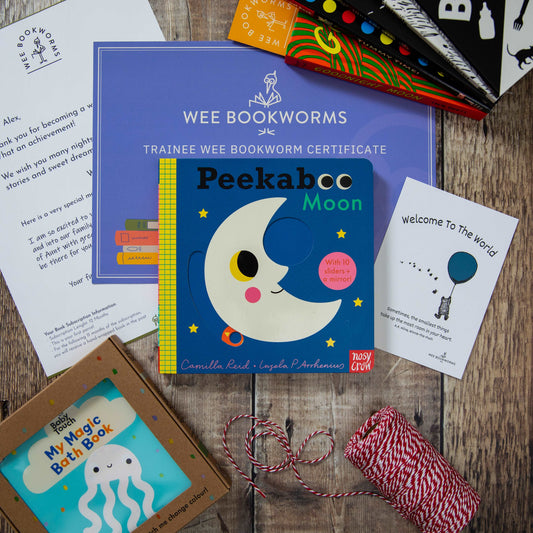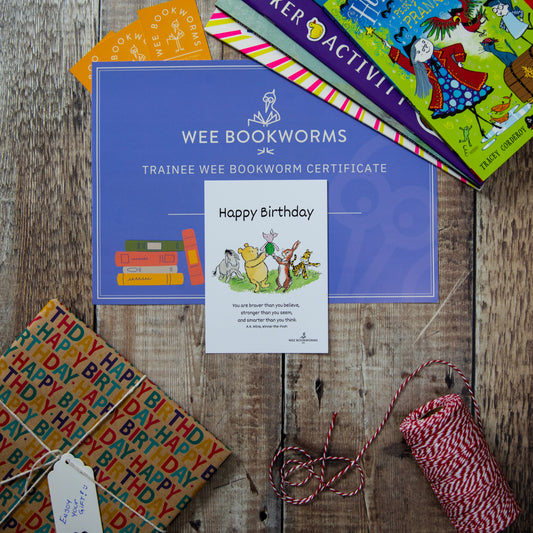Childhood is a time of exploration, growth, and learning, and one of the most effective ways for children to develop their imaginations and discover the world around them is through the power of reading. While reading stories full of adventure, magic, and humour is essential, there's also a case to be made for letting children read scary stories. Parents may have legitimate concerns about the potential harm of exposing their children to fear-inducing narratives, but in this blog post, we'll delve into why children should read scary stories and how they can do so in a safe and age-appropriate manner.
The Benefits of Scary Stories for Children: Learning About Dangers
Scary stories often contain elements of danger, and through these narratives, children can learn about facing and overcoming fear. These stories allow kids to experience emotions such as fear, anxiety, and suspense in a controlled environment. They can put themselves in the shoes of the characters and explore different strategies for coping with difficult situations, thus developing valuable problem-solving skills. In this way, children can learn how to confront their own fears and uncertainties.
The key to making scary stories beneficial lies in choosing stories that not only entertain but also provide teachable moments. For example, stories where the protagonist must navigate a dark forest can teach children about the importance of preparation and resourcefulness.
Keeping Them Reading
One of the biggest challenges for parents and educators is keeping children engaged with books. Scary stories often captivate young readers due to their thrilling and suspenseful nature. Children are naturally drawn to the excitement and mystery that comes with scary tales, making them more likely to pick up a book and immerse themselves in its pages. As a result, these stories can be a gateway to developing a lifelong love of reading.
Roald Dahl, the renowned author of children's literature, certainly understood the appeal of scary stories. Dahl's books often feature elements of the macabre and the unexpected, making them perfect examples of how a touch of fear can keep children eager to read.
The Importance of Age-Appropriate Content
It's essential to emphasize that not all scary stories are suitable for all children (that's more or less obvious). The choice of literature should be age-appropriate, taking not only the child's age into account, but also their emotional maturity, and individual sensitivities. A gentle introduction to fear might begin with stories like Maurice Sendak's "Where the Wild Things Are" or Dahl's "The Witches," which contain elements of suspense and danger but are ultimately reassuring and empowering.
As children grow and mature, they can gradually explore scarier stories, such as the classic fairy tales by the Brothers Grimm (although they can be even very scary for adults) or Dahl's more chilling works like "The BFG" or "The Twits." Age-appropriate selection ensures that children can appreciate the story's underlying themes without becoming unduly frightened.
Here are a couple of examples for age-appropriate, slightly scary stories:
- Ages 3-5: Where the Wild Things Are by Maurice Sendak, Room on the Broom by Julia Donaldson, Pick a Pumpkin Patricia Toht (the perfect book for Halloween).
- Ages 5-8: The Amelia Fang series by Laura Ellen Anderson, The Skull by Jon Klassen
- Ages 8-11: The Goosebump series by R.L.Stine, Zombierella by Joseph Coehlo, The Roald Dahl books
- Ages 11-14: Neil Gamain's Coraline or The Graveyard Book, Scary Stories to Tell in the Dark by Alvin Schwartz, Miss Peregrine's Home for Peculiar Children by Ransom Riggs.
If you find it difficult to find a suitable book for your young reader, you should take a look at our Book Subscriptions for children. We offer both prepaid and monthly paid subscription options.
Why Do Kids Love Reading Scary Stories?
Thrills and Chills: Children, like adults, enjoy the excitement and adrenaline rush that comes with being scared. Scary stories are like rollercoasters for the mind, offering a controlled thrill that can be both exhilarating and addicting.
A Sense of Empowerment: Scary stories often feature young protagonists who confront their fears and triumph over adversity. This can make children feel more empowered and capable of handling challenges in their own lives.
Expanding Imagination: Scary stories encourage imaginative thinking as children visualize the eerie settings, mysterious characters, and unpredictable twists. This creative engagement can lead to better problem-solving skills.
Exploring Emotions: Scary stories provide a safe space for children to experience a range of emotions, including fear, curiosity, and empathy. Understanding and dealing with these emotions is an essential part of growing up.
The Magic of Roald Dahl
Roald Dahl, an author beloved by children and adults alike, was a master of weaving dark and fantastical elements into his tales. His books often feature a blend of whimsy and terror, captivating young readers with their unique combination of humor and horror. Here are a couple of Roald Dahl quotes that reflect his approach to storytelling:
"A little nonsense now and then is relished by the wisest men."
This quote encourages us to embrace the absurd and the eerie, understanding that a bit of nonsense and fear can be a source of delight and wonder.
"Those who don't believe in magic will never find it."
Dahl's works are filled with magic, whether it's the supernatural powers of Matilda, the fantastical adventures of James in "James and the Giant Peach," or the mysterious factory in "Charlie and the Chocolate Factory." These stories inspire children to believe in the extraordinary and seek the magic in the world around them.
Reading scary stories can be a valuable and enriching experience for children when approached thoughtfully. Through these narratives, children learn to face fears, develop problem-solving skills, and, most importantly, cultivate a lifelong love for reading. The key is to choose age-appropriate content and encourage a balance between excitement and safety.Authors like Roald Dahl have demonstrated how a touch of darkness can enhance the magic of storytelling. As parents and educators, we should embrace the benefits of scary stories and introduce children to this captivating world of imagination, helping them grow into resilient and imaginative individuals who can navigate the adventures of life with courage and creativity.











